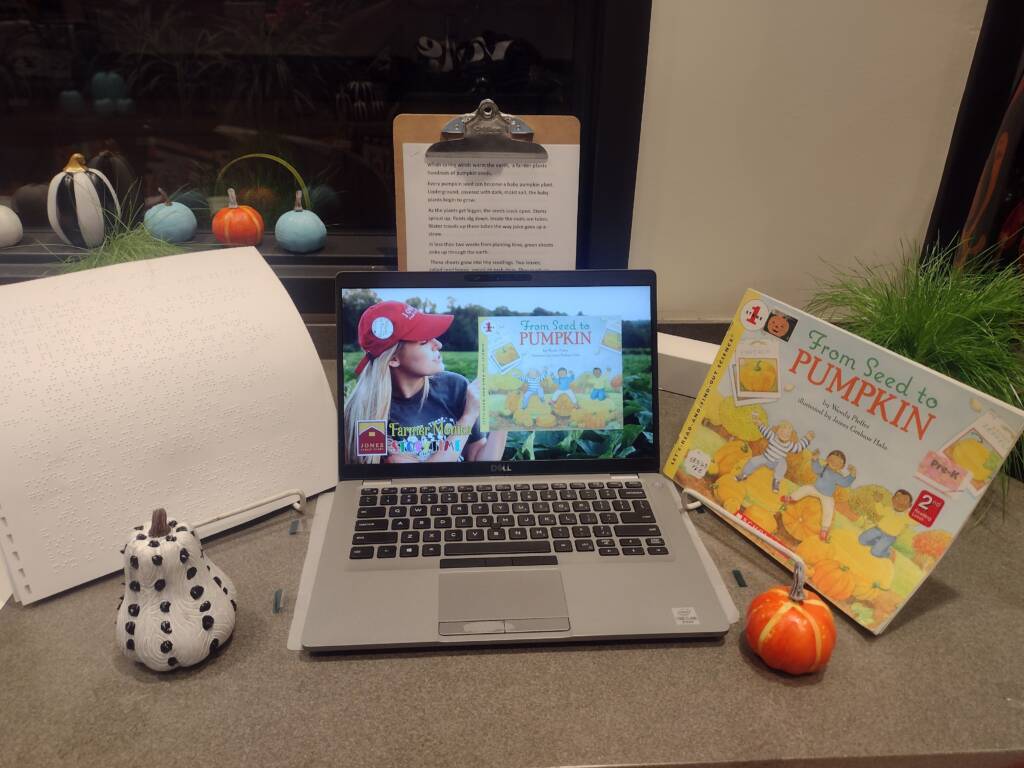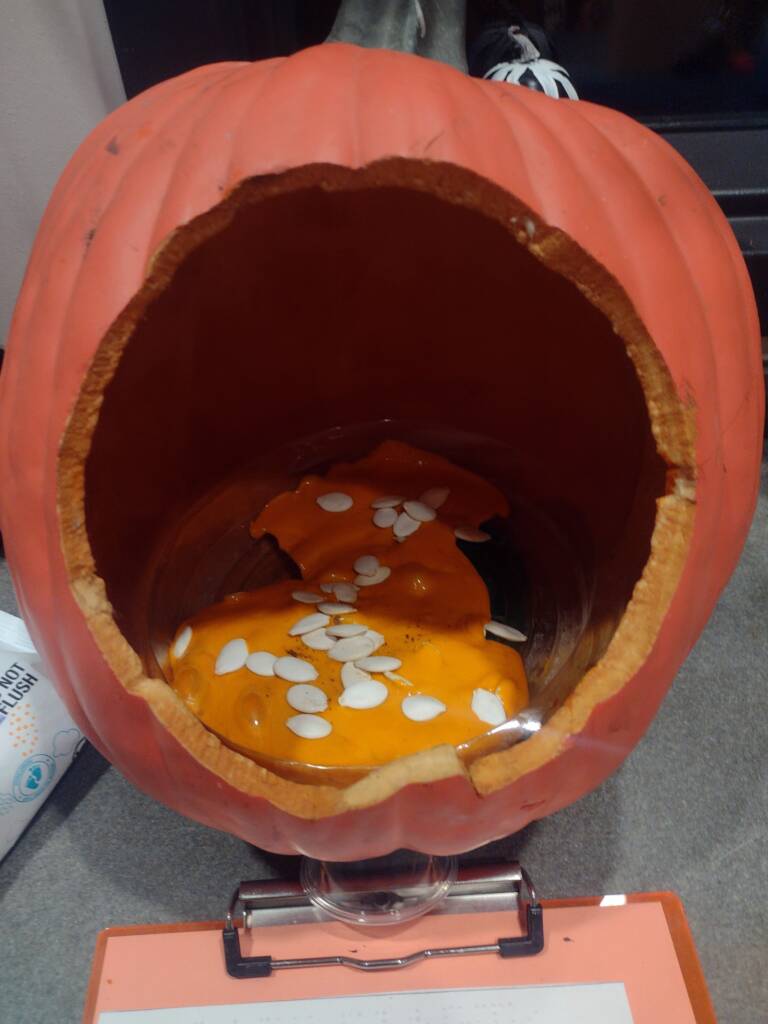Pumpkins have long been a symbol of the autumn season, a favorite by both children and adults. From the carving of jack-o’-lanterns to the growing trend of pumpkin-flavored beverages and edibles, like those fresh baked Dunkin’ Pumpkin Spiced MUNCHKINS, this winter cultivated squash is a tool for literacy. They serve as a reminder of the changing seasons. The pumpkin’s journey from seed to table or doorstep provides rich learning opportunities, particularly for students who benefit from multi-sensory experiences.
In the Horticulture Room, at Maryland School for the Blind, I have harnessed the educational potential of pumpkins in a unique way by creating six interactive stations that engage students in learning through touch, sound, taste, and smell. This approach not only enriches their sensory experiences but also connects them to literacy in meaningful ways. Below is an overview of each station and its role in fostering a path to literacy for our students.
Station 1: Auditory Engagement
At this station, students engage with the auditory story From Seed to Pumpkin by Wendy Pfeffer. The continuous loop video is complemented by large print text, Grade 1 Braille, and the physical book for those who prefer visual engagement. The APH Bright Line Reading Guide is provided to further assist students in tracking text. The goal is to cater to differentiated learning styles.

Station 2: Hands-On Sensory Engagement – Real Pumpkins

Students interact with three distinct pumpkins: a Black Fatsu Pumpkin, a Gooseneck Pumpkin, and a Long Island Cheese Pumpkin. Each pumpkin varies in shape, size, and texture, offering an opportunity for classification and comparative analysis. Handling these real pumpkins allows students to grasp abstract concepts such as size, weight, and shape, while reinforcing cognitive skills. This station builds both sensory awareness and cognitive literacy, as students learn to differentiate and classify physical objects.

Station 3: Tactile Exploration – Raised Line Images
At this station, students can explore raised line images of pumpkins, understanding their structure through touch. Raised images convey information similar to visual representations but in a tactile format. By feeling the outlines and textures, students can interpret diagrams in ways that support spatial and conceptual literacy. This station emphasizes how tactile information can substitute for visual cues in understanding maps, graphs, and diagrams.

Station 4: Tactile Model
This station presents the anatomy of a pumpkin through a tactile felt fabric model. With braille and print Velcro labels, students can explore the parts of a pumpkin (e.g., seeds, pulp) in a hands-on way. Yarn represents the pulp and actual pumpkin seeds, offering another layer of texture. The model helps students build anatomical vocabulary and enhances their understanding of plant life cycles, contributing to both scientific literacy and language skills.

Station 5: Texture Exploration – Pumpkin “Guts” Slime
In collaboration with the Materials Group at the Maryland School for the Blind, we’ve created pumpkin “guts” slime complete with pumpkin seeds. This station allows students to explore texture in a fun, hands-on way. As they engage with the slime, students build fine motor skills and develop descriptive vocabulary, both of which are essential elements of literacy. The sensation of slimy pulp, combined with the tactile experience of seeds, stimulates curiosity and language development.

Station 6: Taste and Memory
Taste plays a powerful role in memory and emotional connections. At this station, students are treated to pumpkin-flavored snacks, such as Mini Biscotti Pumpkin Spice Cookies or Pumpkin-Drizzled Popcorn (Aldi’s Store). The experience of tasting pumpkin-flavored foods triggers memories and emotions tied to the season, helping students form associations between flavor and experience.

Finally, to further immerse students in the seasonal experience, aromatherapy diffusers fill the room with the scent of pumpkin spice, reinforcing the theme of fall. Smell, like taste, plays a crucial role in memory, helping to form lasting connections with the learning activities.
Through these six stations, the pumpkins serve as more than just seasonal decorations and become tools for literacy. Each station plays a role in building different levels of literacy, from language development and cognitive classification to scientific understanding and emotional connection. By engaging multiple senses—auditory, tactile, taste, smell—students at MSB could connect with the world around them in a way that’s useful, enriching, and educational. Pumpkins, with their versatility and symbolism, truly embody the essence of a multi-sensory pathway to literacy.




